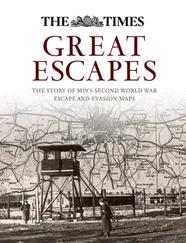My estimate is on the low side. In the latest survey of German history in the twentieth century, the number of rapes in the entire Reich territory by the Red Army alone is put at 1 million, although without new calculations having been made. [28] Ulrich Herbert, Geschichte Deutschlands im 20. Jahrhundert (Munich 2014), p. 534, with reference to Regina Mühlhäuser, ‘Vergewaltigungen in Deutschland: Nationaler Opferdiskurs und individuelles Erinnern betroffener Frauen’, in: Naumann, Nachkrieg in Deutschland , pp. 384–408, which in turn is based on figures by Helke Sander and Ingrid Schmidt-Harzbach. The high figure for Austria is based on an obscure formula attributing an average of two rapes for every occupying soldier. Barbara Stelzl-Marx mentions this rule of thumb without stating whether it applies to all occupying armies or just the Soviets; see Stelzl-Marx, Stalins Soldaten in Österreich , p. 411.
The standard work by Norman M. Naimark, Die Russen in Deutschland , and Helke Sander’s working group both assume up to 2 million victims of the Red Army. [29] Norman M. Naimark, Die Russen in Deutschland: Die sowjetische Besatzungszone 1945 bis 1949 (Berlin 1997), p. 170.
The American criminologist J. Robert Lilly, who speaks of only 11,000 rapes by the US Army, takes the proceedings before American military courts as the basis and multiplies it by a factor of 20, on the principle that only 5 per cent of cases led to criminal proceedings. [30] J. Robert Lilly, Taken by Force: Rape and American GIs in Europe during World War II (Chippenham 2007, first published in French in 2003).
This 5 per cent quota also applies to rapes following the landing of Americans in Great Britain and France, which appears high compared with Germany, where there were fewer scruples and no organized criminal prosecution during the occupation of the enemy country. Lilly also quotes only the period until September 1945. If we extrapolate his findings, the discrepancy between his estimate of the number of American perpetrators and mine is in fact quite small.
Helke Sander, who was the first person to study systematically the subject of mass rape by the Red Army takes a much broader view. With the aid of the demographer Gerhard Reichling in the 1990s, she put the number of rapes in Berlin alone at 110,000, with a further 1.9 million in the Soviet occupied zone, the former German eastern territories, and during flight and expulsion. This makes 2 million German women victims of war-related rape by the Soviets. [31] Johr, ‘Die Ereignisse in Zahlen’, p. 72, fn. 2.
As the figures by Sander and Reichling for a long time remained the first and only estimate, this assumption has since been accepted as fact. It is constantly cited, usually accompanied by the comment that exact figures are unavailable. [32] See Norman M. Naimark, ‘The Russians and Germans: Rape during the War and Post-Soviet Memories’, in: Raphaëlle Branche and Fabrice Virgili (eds.), Rape in Wartime: A History to Be Written (= Genders and Sexualities in History) (Basingstoke 2012), pp. 201–19.
Helke Sander’s working group, with Ingrid Schmidt-Harzbach, Barbara Johr and Gerhard Reichling, based its calculations on the following assumptions: 20 per cent of the raped women became pregnant, of whom 90 per cent aborted, and around 5 per cent of the children born in Berlin between the end of 1945 and summer 1946 were fathered by Russians. On this basis, arrived at through random samples in Berlin hospitals and taking the figure of 1.4 million women living in Berlin at the time, it determined that around 110,000 women, or 7 per cent, had been raped by Red Army soldiers in early summer and autumn 1945. [33] It is possible that the entire female population was erroneously used as a basis.
Of these, 10,000 had died or became seriously ill with gonorrhoea – which often made them infertile – or syphilis.
One seeming discrepancy compared with my estimates is the rate of pregnancy as a result of rape. More recent studies have shown that in the USA, where contraception and the morning-after pill are available, 5 per cent of the rapes of young women result in pregnancies, whereas in studies in countries like Mexico or Ethiopia, where these contraceptive methods and the possibility of abortion are less available, the figure is around 17 per cent. The rate therefore appears to be correlated with contraception and the age of the victims (and the number of rapes per woman). As there was no Pill in 1945 and the perpetrators are unlikely to have used contraception, but also as many non-fertile girls and women were raped, I have taken a generally accepted mean conception rate of 10 per cent, which would make my estimate of the total rapes higher than Sander’s.
The main difference between Sander’s and my estimate, however, is the underlying number of rape children. Sander’s estimates are based on random samples from just two Berlin hospitals, without knowing whether they were representative or whether only certain cases of raped women were treated there. I would venture that these patients were probably women who had been severely mistreated, injured or infected with an STD, or whose menstruation had stopped after the rape. Even in a large city like Berlin, it was by no means a matter of course at the time for people to go to a hospital.
Gerhard Reichling estimates a somewhat higher rape quota of 7.5 per cent for German refugees, displaced persons, deportees and inhabitants left behind in the East. He claims that they were raped more frequently because they had less protection outside the cities. Based on this assumption, he arrives at a total of 1.9 million rapes. [34] Johr, ‘Die Ereignisse in Zahlen’, pp. 58–65.
The obvious problem here too is that Reichling, unlike us today, had no official figures for the number of occupation and rape children. Moreover, his supposition that rape was more frequent in the East than in Berlin, where women also had scant protection in the bombed-out houses, is tenuous. Above all, an extrapolation on the base of a fixed rate has the disadvantage that it does not reflect the dynamics of war and flight. The war situation meant that different numbers of soldiers were on the move at different times and were in varying mental and material states.
In my opinion, the excessive figures in the project by Helke Sander, Barbara Johr and Gerhard Reichling are due to the still-existent latent bias in the East–West conflict and the impetus of the initial revelation and scandal surrounding the mass rape of German women. Sander’s approach in the early 1990s in particular was still influenced directly by the feminist struggle against sexual aggression by men, which since the mid-1970s had given great stimulus to the movement. Before Sander, no one had bothered to research this topic systematically. She deserves recognition for this. Nevertheless, I consider my estimate of 860,000 rape victims to be more realistic – once again pointing out, however, that these are only cases of vaginal penetration. In the absence of data and source material, other forms of sexual aggression, including acts perpetrated on male victims, cannot be included.
I cannot even speculate on the relative weighting that should be given to the individual occupying armies. I should like nevertheless to mention one way of estimating the ratio. If we assume a 5 per cent quota for the American occupation zone, we arrive at around 5,000 rape children among the 37,000 occupation children. This would suggest that around 190,000 women living in the Federal Republic were raped by Americans, 50,000 women by French, 45,000 by British, 15,000 by Soviet and 10,000 by Belgian occupiers. This estimate would only be anything like accurate if the 5 per cent quota applied equally to all occupying armies.
Читать дальше











